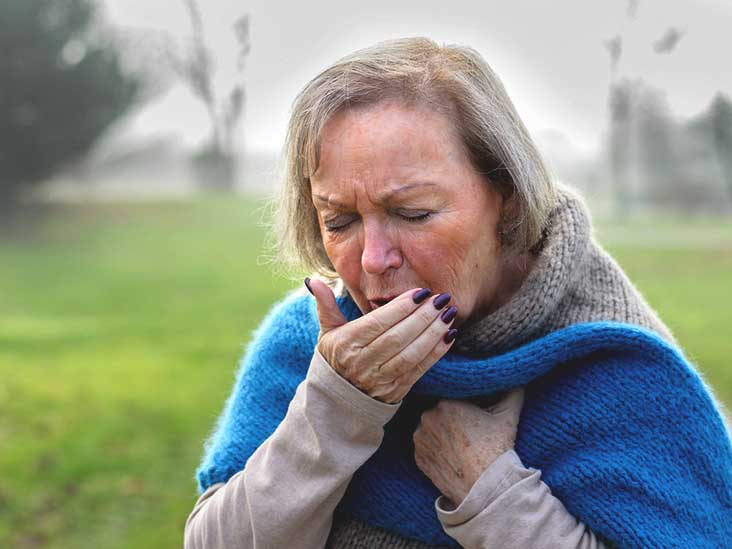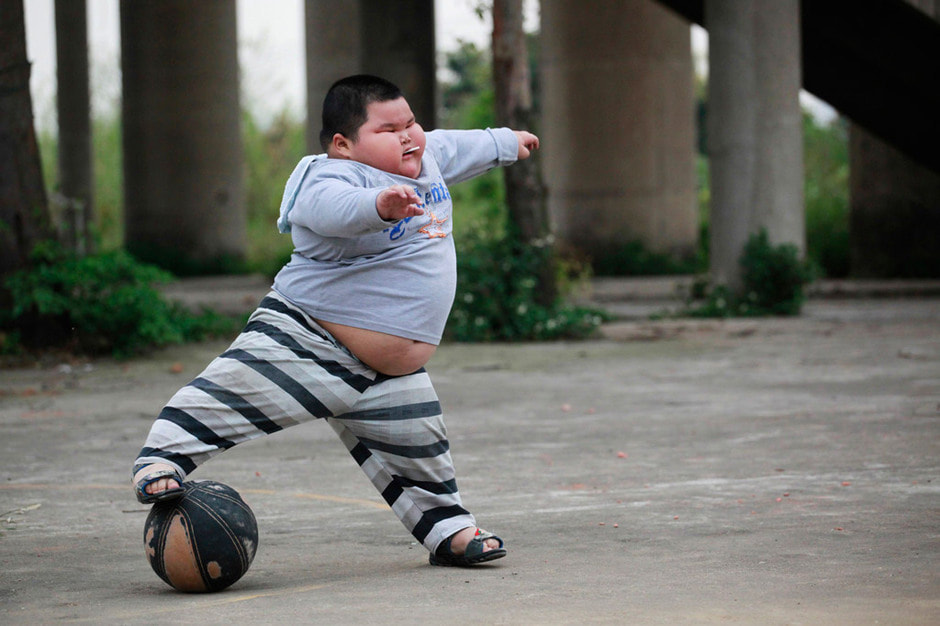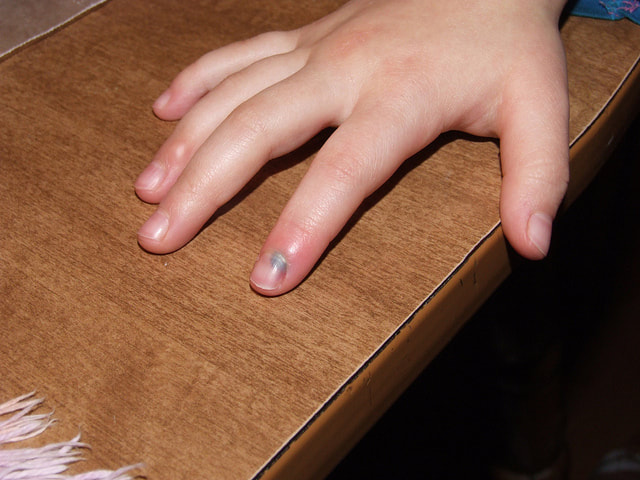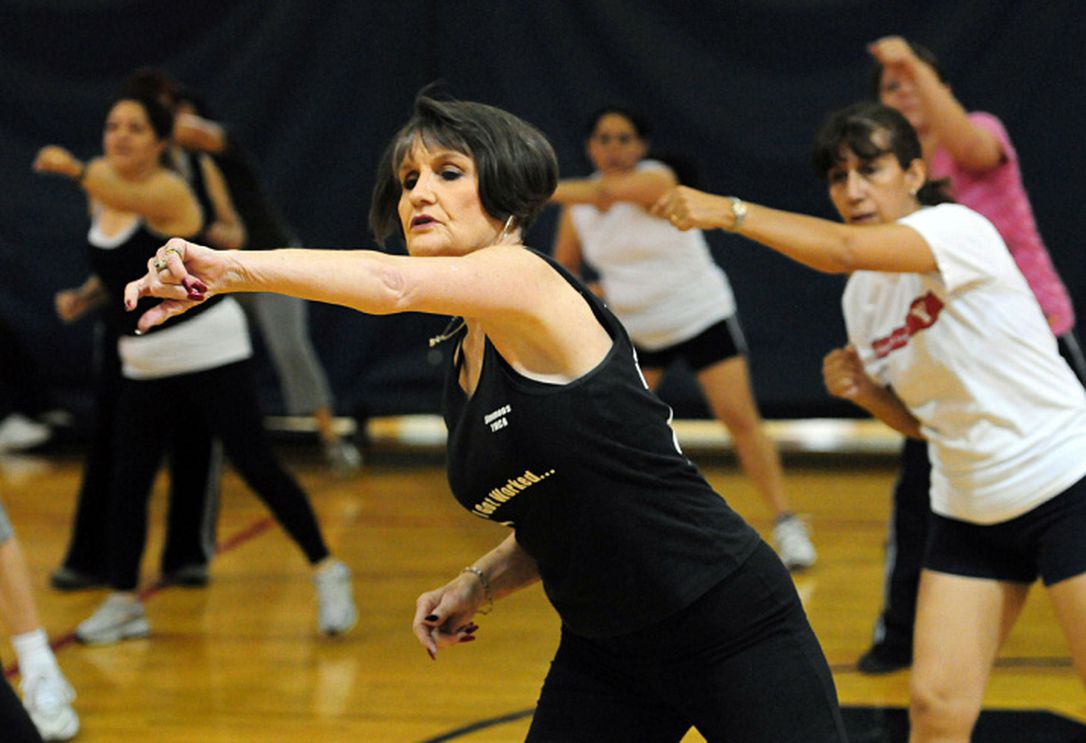 Sitting Without Support Kills the Chances of a Perfect Reading Sitting Without Support Kills the Chances of a Perfect Reading Is it the sphygmomanometer that’s tricking our eyes or are we inducing the BP instrument to show different measurements with our faulty acts? Its quite strange that your BP readings differ slightly between instruments when measured back-to-back and even the same readings might show different measurements when taken twice in a while. The need has sprung up to monitor your BP at the comfort of your home owing to serious health consequences owing to varying blood pressure levels. But, even small issues that seem insignificant during the time of measurement might cause fluctuations in readings anywhere between 2 and 40 mmHg. Next time you think of getting your BP checked ensure that you follow the guidelines given here for an accurate measurement without which hearing the BP values could make your pressure go up high even further & the dosage further higher! Such high measurements can lead to debilitating side effects. Control your blood pressure levels with a lifestyle change that includes eating healthy foods and exercising regularly. Get in touch with nutritionists/dietitians at www.firsteatright.com to get a customized diet plan to keep BP under control. The American Medical Association has stated the common positioning problems that can lead to increase in blood pressure levels. If the patient has:
Failure to follow any of the above-mentioned guidelines (such as not placing the foot on the floor or abstaining from talking) can lead to incorrect readings that are high. This in turn makes the doctor prescribe high-dose medications that can be harmful on the body. Whereas, sticking by the recommendations helps in achieving correct measurements and medications prescribed for these readings.  Hop & Play, Save Your Relationship from Going Astray Hop & Play, Save Your Relationship from Going Astray Relationship status: Single, Engaged or Married in your social media accounts is not all about simply having a partner. We don’t have the power to choose or parents or siblings but we have been blessed with the ability to make choices on our life partners, friends and other people whom we would like to travel with us in our journey of life. Almost none of us remember our initial 2-3 years of life but the experiences during those times might tag along with us and influence our choices later in life. Understanding the knack of getting into a healthy and romantic relationship and maintaining it is one of the key skills required by young adult to flourish in life. A healthy and loving relationship is purely based on love, problem-solving ability and without any physical/verbal violence involved between the two. The interesting catch here is that such healthy relationships exist and are influenced by the different experiences that people have had in their own respective families. Relationships Churned by Family Values? How our family environment influences our romantic relationships and our social skills hasn’t been well-known and discussed until now. But we have heard enough about proverbs such as ‘Tell me your friend, I will tell you who you are’ and ‘Like mom, like son’ which show us the huge impact of the company we keep and the surrounding we grow up in. For instance, one of my close friends has a stuttering problem but it was not an inborn issue. He grew up in a hostile environment where his parents were constantly arguing and physically fighting too. One fine (or rather bad) day he started to stammer after witnessing one such fight. When the physician analyzed he came to know that the child’s mind had been tremendously affected and all the buried feelings exploded as stuttering. The environment in which you grow plays a prominent role in defining who you are and what you do. To understand the link between family environment and its effect on romantic relationships a team of researchers analyzed long-term data from more than 10,000 youngsters in rural and semi-rural communities. From them, 2,000 randomly selected people were analyzed as young adults in the follow-up research. This included 974 participants who were 18-21 years old and in a steady romantic relationship. All the 2,000 participants were questioned about their assertiveness, engagement with family members, the atmosphere existing in the family and the impact of their parent’s discipline methods in grades 6, 7 and 9 respectively. Again, between the age of 18 and 21 they were questioned about violence levels, problem-solving skills and the quality of love they experienced in their relationship. Results showed that individuals brought up in close-knitted families that has an underlying current of love, compassion and understanding were at a minimal risk of being in an abusive/violent romantic relationship or one that had poor problem-solving abilities. One surprising find here is that neither the parenting methods nor the family environment had any impact on the amount of love existing in any relationship. But a positive parenting approach had a positive impact on the participant’s assertiveness helping them put forth their needs in a positive way and also have a smooth interaction with both the families. This study clearly shows that children who grew up experiencing a positive family environment and effective parenting were likelier to have healthy romantic relationships as young adults. Such healthy relationships take away a great disturbance in life-stress, at least in personal life. Stress in personal life can take a toll of your health too leading to serious consequences elaborated at www.firsteatright.com. In turn, children who were cooperative, confident and well-behaved also were great contributors to a positive family climate. Your family is the first relationship you develop born into this world and how you behave amongst family members has a great impact on what you do with your other relationships later in life. Constructive or destructive communication, communicating in a neutral way, yelling during a disagreement or throwing tantrums are all learnt during your first intimate relationship-that is your family relationship. Other acts or feelings later in life are an extension of this. So, when young parents now realize this maybe they have an opportunity to provide the best environment for their kids in terms of kindness, love and affection to help these children grow into assertive young adults who can nurture a loving and caring romantic relationship.  Curbing your Ability to Exercise Can Disturb the Mind Greatly Curbing your Ability to Exercise Can Disturb the Mind Greatly Habits are like addictions. Its extremely difficult to let go of them once our mind and body is attuned to it. Forming a habit takes time (and of course practice) and un-forming a habit takes even more time. Exercise is one of those habits that’s difficult to get into the groove but once our mind is fixed on it the day remains incomplete without performing it. Physical education (PE) hasn’t gained much prominence in our country, there are not many schools which insist on PE as much as academics. Such educational institutions can never become the cornerstone of physical activity and habit formation. Whereas, as parents we are obligated to nurture our children with the best of characters, personality and habits with relentless efforts. Once children grow up with a defined set of habits what exactly is their mindset when they are suddenly told to unfollow some of them? Forming &Un-forming Habits Exercise is as important as brushing our teeth or going to sleep. There can be no excuses accepted for refraining from exercising except when our own health doesn’t permit it. Every nutritionist, dietitian and health expert recommend getting at least 150 minutes of moderate-intensity exercise on at least five days a week to stay in shape and be fit. Why don’t you get your lifestyle corrected with the needed diet changes and exercise practices by getting in touch with reputed dietitians and nutritionists at www.firsteatright.com? Once we get used to any form of exercise-walking, jogging, gym, aerobics or a sport-we look forward to it with eagerness and enthusiasm. There are studies supporting the fact that exercising is good for mental as well as physical health. It helps to relieve stress, bring in serenity and help the individual stay away from depression. So, can avoiding exercising or non-performance of any physical activity lead to depression in a person? Though we are well-aware that exercising regularly can reduce depression we are not quite aware of what happens to these depressive symptoms when exercise is stopped. This attracted a group of researchers who reviewed studies that looked into the case of 152 adults (50 were women) who stopped exercising. Each of them was habituated to exercising at least for 30 minutes thrice a week for the past three months. Researchers were surprised to know that stopping to exercise triggered symptoms of depression in some people after three days itself while some others started experiencing depression symptoms a week or two after halting the physical activity. Also, female participants exhibited pronounced symptoms compared to their male counterparts. We cannot come to definite conclusions from this because the above study looked into aerobic exercise only, without taking account of resistance training or mixed exercise. While the area of research seems to be quite interesting there are no solid evidences or authentic proofs that help us derive the conclusion that halting exercising increases chances of depression. We are left with many unanswered questions here-Does an individual get depression even when he/she is forced to abort activity due to some injury? For someone whose depression levels are always imbalanced does stopping activity for a couple of days show evident changes? But, the grounds on which this research is done highlights the benefits of exercising once again. It is always appreciable to make a habit of some physical activity, stick to it and continue performing it to reap benefits. Don’t go by what the society norms state-walking, gym or Zumba are not the only ones available. Choose something that your heart yearns for. If you love sports, choose something between football or tennis, if you are an extrovert you can always opt for group fitness classes and if you are an introvert it is never wrong to perform some physical exercises all by yourself in the comfort of your home or go for a quick jog in the lush green park outside. It takes no more than 3 seconds for you to eat a handful of chips before poking again into the bowl for another helping but your grandpa seems to find it difficult to push down a single one despite the fact that he loves to eat them! While his heart reaches out to the bowl his swallowing ability prevents him from eating them rapidly. Ageing brings about a reduction in muscle mass, function, speed and efficiency in every adult who reaches this phase of life. Have you ever noticed elderly people preferring to eat soft foods such as porridge or soap to pastas or pizzas? They have reached a point where their only wish is to live comfortably every day for the rest of their lives causing themselves and others no trouble, ensuring their good health as much as possible and trying to accomplish as many things as possible by themselves. Swallowing difficulty is a side effect of many medical conditions such as stroke, conditions that affect the nervous system or surgeries involving the neck and throat. Swallowing difficulties can be a sign of ageing too and almost all individuals experience varying proportions of it above the age of 80.
Dysphagia Its no surprise that people start losing teeth with ageing (in fact, youngsters these days go for root canal treatment and removal of decayed tooth) and these missing teeth might make swallowing a difficult affair. But a new study has come up with a strong association between swallowing difficulty and loss of muscle and function in the throat. The study included 31 adults aged between 62 and 91 years who had no swallowing problems and 33 healthy young adults aged between 18 and 28. Both the groups underwent an X-ray video test that elaborated the swallowing procedure. This video showed for how long the wind pipe was in a closed state during swallowing, how long it took to close the airway and how food was prevented from entering the lungs. The video showed that the process of swallowing was delayed in older adults meaning the food got into the throat later and it also took extra time for the subsequent actions to start and prevent food from entering into the windpipe. This shows that older adults are at an all-time risk of getting their food stuck in the lungs that can also lead them to death (a condition called as aspiration pneumonia). Almost 15% of the elderly population experience dysphagia (swallowing difficulties) and this can land the person with malnutrition, dehydration and pneumonia. In short, it has debilitating effects on the health and quality of life of individuals. Exercise for the Throat? We exercise for every part of the body right from our arms, legs and belly to neck and face. Why don’t we try doing a few exercises for our throat muscles too? Its in our hands to prevent a small problem from blowing out into a full-fledged one by ensuring a few things. Take good care of your teeth and ensure tiptop oral hygiene. Get handy tips on maintaining oral hygiene at www.firsteatright.com. Take in small bites of food and chew them well to ensure that they get into the food pipe (esophagus). Ageing brings about various changes to our body:
Not identified until the late 1960s, Lassa fever hit the West African countries badly last year. Currently an endemic, this disease has the potential to cause dangerous epidemics but there are no vaccines available for it until now! Even many of the health workers who were involved in treating those affected became victims of the disease and died. While the Lassa disease’s normal fatality rate is only 1% last year’s outbreak confirmed more than 20% fatality rates among the total affected population.
Lassa Fever Lassa fever is categorized as a zoonotic disease as humans are affected due to contact with infected animals. The Mastomys rats are carriers of the Lassa virus which do not become ill due to the virus but spread the virus via their feces and urine to humans. Commonly known as the ‘multimammate rats’ they are commonly found across West Africa and are smart enough to find their way to people’s homes. Its very common for people to be affected by Lassa fever through anything that’s contaminated with the rat’s saliva, blood or excreta. It can be through eating, drinking or simply by handling contaminated objects. The virus can also be transmitted via bodily fluids such as direct contact with blood, urine, saliva or other such fluid secretions of a person infected with the Lassa fever. Airborne expression of the disease is not evident till date, but the virus can spread via re-used needles, sexual transmission and when people tend to the needs of the affected individuals without proper protection. Symptoms Lassa fever can affect anyone of any age group irrespective of the gender. Incubation period is usually anywhere up to 3 weeks. Symptoms show up gradually starting with fever and weakness and proceeding to headache, sore throat, muscle pain, chest pain, cough, vomiting, diarrhea and abdominal pain. Extreme manifestation of the virus presents itself with symptoms such as facial swelling, fluid in lung cavity, bleeding in nose, vagina or mouth and low blood pressure. Seizures and coma are also experienced by few patients in advanced stages. Sadly, Lassa disease leaves 25% of the patients with deafness out of which almost 50% of them recover with partial hearing after 3 months or so. If death is the result, it happens within 14 days of the onset of the disease. Pregnant women who are detected with Lassa fever during later stages of pregnancy are at a higher risk of maternal deaths and/or fetal loss that’s common 80% of the time. Diagnosis & Treatment There is no symptom that’s extremely specific to Lassa fever and this makes it difficult to diagnose, especially in the initial stages of the disease. The symptoms are common to other viral diseases such as Ebola (researchers are trying to find out if the virus can be passed through sexual contact as in Ebola even after the illness is cured) virus disease and others such as malaria, typhoid, jaundice and shigellosis. A lab testing can confirm the disease’s presence. Read more about Ebola and its devastating effects on human life at www.firsteatright.com. Treatment usually involves early administration of ribavirin drug. Prevention “Cleanliness is next to godliness” and the prevention measures for Lassa disease include just the same. Keeping your house clean, disposing garbage somewhere away from the residence, storing grains and other edibles in rodent-proof containers and growing cats as pets (which keep rats away from the house) and promoting hygiene of the community are sure-shot ways to stay protective. The problem with Lassa disease is that the Mastomys rats are abundant in endemic areas and its not possible to get rid of them completely. All that we can do is take preventive measures and be careful while attending a sick person avoiding contact with their blood or body fluids. Healthcare workers tending to Lassa patients must wear face masks, long gowns and gloves. Its possible for travelers returning from Lassa-prone areas to export the disease to other countries. Finding vaccines for the disease is possible which could reduce death tolls and impact significantly. The problem here is that, diseases such as Lassa fever are mostly present in poor countries which lack the necessary economy and technology to find solutions.  Knowing What to Eat & What Not to Eat Does the Trick Knowing What to Eat & What Not to Eat Does the Trick We are what we eat! The effect of the cruelest of things that happen to an individual slowly starts to wear away as you start adding salt and spice to your diet! Eating might be a part of mankind needed for survival and sustenance but there’s more to it! Some treat food even as a symbol of love when they run out of words to express their care and warmth to others. For others its an opportunity to explore the world and be happy. Every country, different states in a country, and different cities in every state have a cuisine of their own. This makes our world filled with an innumerable number of cuisines, dishes and ingredients. Not even a food connoisseur would be aware of everything. Life is a balance of the different things that happen around us such as good and bad, happy and sad and so on. Likewise, eating too is an art. Eating too much or too less of certain foods raises the risk of dying of heart disease, stroke and type 2 diabetes. How we eat, what we eat and how much we eat influences our disease risk. Too Much or Too Little? Overconsumption of salt, sugar or fat can raise your risk for a variety of diseases while eating healthy foods lowers your risk for heart disease, stroke, diabetes and other diseases as well. We all know that fruits and vegetables are healthy, chips and burgers are unhealthy then what’s all the fuss about eating healthy food all the time? The trick lies in portion control, choosing the right nutrients and pairing them with your choice of foods. Basically, any healthy eating plan strictly adheres to eating more of vegetables, fruits, whole grains, fat-free/low-fat dairy products, moderate portions of eggs, nuts, lean meats, beans and poultry and above all, minimizing the intake of saturated and trans fats, sodium and added sugars. While this exists as a general thumb rule there is also a need to understand how the various dietary components affect the risk of dying from various diseases. To find an answer to this question the researchers picked out 10 different foods and nutrients analyzing their relationship to diseases such as heart disease, stroke and type 2 diabetes. It was found that almost 50% of all deaths linked to cardiometabolic diseases (heart disease, stroke and type 2 diabetes) was associated with haphazard eating habits despite controlling factors for age, sex and ethnicity. A total of more than 7,00,000 deaths happened in adults due to heart disease, stroke and type 2 diabetes. Almost 3,00,000 (45%) deaths were linked to decreased consumption of certain foods and nutrients needed for healthy living along with overconsumption of certain other foods that are branded as ‘unhealthy. The risk of cardiometabolic diseases due to increase/decrease in certain nutrients consumption were as follows:
 Screen Time is Fun when My Mom Sits Down to Watch My Favorite Cartoon Screen Time is Fun when My Mom Sits Down to Watch My Favorite Cartoon Last week I saw a parent rushing into her pediatrics’ chamber carrying her 3-year-old child. She started complaining that her kid hasn’t started speaking not even uttering syllables or small words. This is a common complaint among the younger generation parents today whose kids tune into smartphones and tablets for engaging themselves. Have you ever thought about why the child catches hold of his/her mother tongue easily while he/she has to learn other languages either at school or from outside? That’s solely because the child keeps hearing the family members speak to each other, speak to him/her and convey anything and everything in their mother tongue. The kid takes into him/her all the syllables, words and sounds heard and thus starts speaking a syllable, word or a phrase in his/her mother tongue. But now, when conversation is limited to WhatsApp, messaging or Skype calls and the kid is given a tablet to engage himself/herself where does the child get the opportunity to listen and speak? He/she is engrossed in his/her mobile world ignorant of things that happen around. Increased Screen Time, Decreased Sociability A latest research that followed up on 2,500 children (aged two) came up with the result that when toddlers spend a major chunk of their time using tablets, mobiles, television or other electronic screen-based devices their language and sociability skills (any developmental skill) are delayed. The research team requested mothers of these children to fill up questionnaires regarding their child’s developmental skills during the ages of 2, 3 and 4. This survey happened between 2011 and 2016. Results showed that:
Decrease Screen Time & Increase Sociability The aim of every parent should be to minimize screen time and maximize interaction with other people-members of the family, friends and neighbors. This must be done as early as the child’s first year of age as children as young as 12-month-olds are getting addicted to viewing television or mobiles. When a parent starts monitoring the child from an early age correcting him/her becomes easier but when this age increases, both the parents and the children find it difficult to accommodate each other’s requirements. Coming to the ultimate question of how much of screen time is too much, the study does not suggest anything in this regard. There were some kids who were seeing bare minimal of not more than 20 minutes while some viewed for up to 4 hours a day. It is better to avoid introducing screen time to kids until the age of two and after that, limit it to one hour a day up to the age of 5. For kids above 5 years it is the parents’ duty to ensure that screen time doesn’t hinder their academics, sleep and play time. Whatever might be the screen time it is every parent’s responsibility to ensure that their children watch only those things that are kid-friendly. For this, every mother and father should sit with smaller children when they are watching things on the Internet. For elder kids, a parental monitoring guard must be ensured in the smartphone the child uses and adults must talk to their kids on the pros and cons of watching something in a clear and concise way.  Takotsubo: Octopus Pot Takotsubo: Octopus Pot So different is a man’s heart from a woman’s heart that people are in total awe of it. We are not talking about emotions, feelings or sentiments here but about a temporary heart condition known as takotsubo cardiomyopathy that’s almost monopolized by women. Almost 90% cases occur in women aged between 58 and 75 years. Its weird to know this fact as heart disease was mostly a man’s thing years ago and it was not until later decades that more and more women began suffering from the condition. The unique name for this condition comes from Japan where the case was first diagnosed in 1900. Takotsubo is a Japanese term for an octopus pot and the disease is named so because the left ventricles (primary pumping chambers) of the heart copy the pots’ shape-a narrow neck and a round bottom. One must clearly understand that takotsubo is nothing but a type of cardiomyopathy (heart muscle disease) where the heart takes up the shape of a balloon (or basically becomes enlarged) and hence, cannot work to its original efficiency. This in turn leads to chest pain just like the one experienced during a heart attack. The left ventricle weakens due to severe stress (emotional or physical) such as loss of a loved one, chronic illness and natural calamities such as earthquake that disrupt life. Hence the disease is also named as stress-induced cardiomyopathy or broken-heart syndrome. Keep yourself far away from stress by practicing meditation, yoga and quite a few other practical techniques which are listed down at www.firsteatright.com. Common Stressors Associated with the Condition
Symptoms The symptoms are similar to a heart attack and hence many individuals seek a physician’s help immediately. The symptoms given below are triggered after any stressful event:
Diagnosis For a diagnosis the physician must primarily ensure that the cause of the symptoms don’t point to a heart attack, the heart muscle is weak and shape of the heart is like a takotsubo. Once these factors are checked the physician proceeds for a diagnosis that includes:
Unfortunately, there are no treatments available for curing takotsubo cardiomyopathy presently and physicians recommend heart failure medications to deal with the condition. Beta blockers, ACE inhibitors and aspirin might be given to patients. Most important is to reduce your chances of suffering from another incidence of emotional or physical stress that can trigger another case of takotsubo cardiomyopathy. Abnormalities start subsiding in a couple of days while the heart takes up to two months to fully recover. Chances of death are extremely rare but almost 20% patients end up with heart failure.  Junk Foods Contribute Greatly to Obesity Rates Junk Foods Contribute Greatly to Obesity Rates Ask a child to go out and play and I am sure he/she comes up with a hundred different reasons (right from leg pain and tiredness to sleepiness) to avoid outdoor activity. This statement even makes our kids studious enough that they quote homework as a reason to abstain from going out. This indoor culture has paved way for a generation of children who seem to outgrow their normal body statistics and become obese/overweight in a short span of time. Childhood obesity rates are rising up and we as parents are concerned about our kids’ health. But what more do we do beyond showing concern? Kids treat their parents as their numero uno role model and copy whatever they do. Compelling kids to go out and play while you sit down with a smartphone, insisting them to exercise while you sleep through the morning or asking them to avoid junk food while you post a pic of yourself eating pizza on Insta are dead ends. Gearing up for a game of badminton, ready to play hopscotch with your little one or going for a walk as a family helps them understand the importance of physical activity in our lives. Dear parents, failing to follow such practices has now landed us with skyrocketing rates of childhood obesity issues and its concerning side effects. Realize the importance of your participation in physical activities to motivate your child with the examples given at www.firsteatright.com. Non-alcoholic fatty Liver Disease Due to Obesity Obesity has its name spread far and wide for affecting people with different ailments and conditions such as increased risk of heart diseases, BP levels, cholesterol and even cancer. Despite its reputation for spoiling people’s health not many are aware of the side effects of obesity in young children: non-fatty liver disease. Non-alcoholic fatty liver disease (NAFLD) is the name given for a group of conditions caused due to build up of fat in the liver. This condition is commonly witnessed in obese/overweight people and has the potential to cause other problems such as diabetes, BP and kidney disease. For someone with diabetes acquiring NAFLD increases the chances of heart disease. While this condition is common in adults a study recently has discovered that it now strikes kids even as young as 7-year-olds if they are obese/overweight. The scariest part is that the disease shows no symptoms and as it progresses there are many chances that the individual might be affected by liver cirrhosis/liver cancer too. A group of researchers studied 635 children measuring their blood levels for an enzyme called ALT. ALT is a marker for liver health where elevated ALT levels are sure indicators of liver damage-a condition that can occur in NAFLD. It was seen that by the age of 8 almost 23% of the participants suffered from elevated ALT levels. Those kids with a big waist circumference as early as the age of three and those children who gained maximum weight between the ages of 3 and 8 were likelier to suffer from elevated ALT levels. The figures of ALT levels between obese and normal kids showed tremendous difference-35% obese kids had increased ALT levels while only 20% normal kids had elevated ALT ranges. Physicians measure ALT levels in children belonging to high-risk category starting from around 10 years but this study highlights the importance of acting earlier and taking necessary actions in terms of preventing excess weight gain and therefore, the risk of non-fatty liver disease. Changing the lifestyle for better and highlighting the importance of physical activity motivate kids to follow a healthier lifestyle. Encourage kids to eat plenty of fruits, veggies and low-fat dairy and discourage the consumption of processed foods to regulate their wellness. Make their daily menu interesting with exciting swaps-whole grain pastas, carrot cakes and much more. Break the monotony by involving kids in planning the day’s menu, asking them to do small chores and appreciating their little deeds. This way, kids too enjoy their experience and never fall back onto their previous unhealthy lifestyle. Rather than associating tonsillitis with pain and meds any of us would be sure to link it up with ice creams and frozen treats instantly. Its around summer time and I am sure each of us are planning to splurge on some exotic ice cream treats and cool mocktails. The intense heat, continuous sweat and unending chilled treats are sure to take a toll on our health one time or the other in the form of cold, flu or even tonsillitis. We finish up on a complete course of antibiotics, couple of days of leave and getting back to normal from weakness but again there are chances of tonsillitis striking the individual. In cases of recurrent attack what is the best course of action to follow?
Bacterial or Viral? Tonsillitis is an infection commonly witnessed among children but teens and adults too can be victims rarely. But if you want a thorough insight into this illness it is better to ask someone who is a parent of a small child as they are thorough about its symptoms and pain from their little one’s infections. Tonsils are two small soft tissues masses located at the back of the throat. Their main function is to fight against infections playing the perfect role of a defense mechanism. Any inflammation of these tissues paves way for tonsillitis that’s usually due to a virus or sometimes might be due to bacterial infections caused by the strep bacteria,Streptococcus pyogenes. Most preschoolers and young kids are victims to tonsillitis (called as strep throat) due strep bacteria which manifests itself with symptoms such as sore throat, fever and swelling of the lymph nodes and tonsils. Tonsillitis presents itself with symptoms of a cold or flu such as coughing, headache, sickness, tiredness, earache, hoarseness, swallowing difficulties and high body temperature. A person affected by tonsillitis feels a painful sensation in the neck due to the swollen tonsil glands and sometimes even suffer from bad breath. The symptoms disappear in a couple of days. So, how do we treat the illness? If the infection is viral there is no use dispensing antibiotics but if it is bacterial, the same physician is sure to prescribe antibiotics as treatments. Then what about dispensing cold medications for treating those infections due to a virus? Helpful in no aspect! We have been using antibiotics regularly and developed a resistance to it-antibiotics resistance has become an explosive problem that needs immediate attention to stave off further damage. For more details about antibiotic resistance and its impending side effects please visit the website www.firsteatright.com. Strep throat (which is due to bacteria) is often cured using antibiotics but sometimes the children get the disease repeatedly (recurrent tonsillitis). These kids are advised to get their tonsils removed surgically. What remains unclear is what exactly is the factor that makes some children likelier than others to suffer from recurrent tonsillitis. Does theStreptococcus Bacteria Love Some of the Children? A research team acquired tissue samples from 66 children whose tonsils were removed due to recurrent tonsillitis and from 80 children whose tonsils were removed due to other medical conditions such as sleep apnea. T-helper cells or T cells are a type of famous immune cells that help another type of immune cells (B cells) produce the perfect antibiotics against bacteria and viruses. It was found that in children with recurrent tonsillitis there was a higher number of novel TFH cell type and fewer numbers of B cells. There seems to be a genetic component attached to this process in the case of children affected by recurrent tonsillitis. The research team could even single out certain genetic variations in the immune system that increased the risk of recurrent tonsillitis.  Join your Pet Who Never Gets Depressed of Activity Join your Pet Who Never Gets Depressed of Activity Genes help us in passing on our physical traits and characteristics to our future generations but most important of all are good values and a healthy lifestyle that parents can pass on to their young ones. Environmental factors and nature can alter these gene structures but when our mind is set on few goals in life there is no stoppage thereon from nurturing our kids with such ideologies. It’s not something new that children grow up by observing and listening to their parents and when a parent knows how to make use of such moments the world is in our hands. Utilizing these moments and being creative helps us to introduce each of the family members to a life of fitness cum play in the family. Take Away & Introduce: TV- or mobile-free households are fading into darkness these days but the first step towards fitness is to do away with electronic gadgets for at least some time during the day. When the kids understand that ‘no-electronics’ concept is only for a certain time duration they would be super excited to work on other things and readily listen to your suggestions. But you must also definitely follow this policy not giving lame excuses for finishing up pending office work or checking out Instagram photos. The family time becomes cherished and one that kids enjoy only when all of you comply to all the rules and regulations. Not a Chore or a Bore: It entirely depends on you how you make or break a chore. Calling out to your kid to give a helping hand in washing the car is going to lead you nowhere. But the same kid becomes interested in the same activity when your entire family gets involved in it, has fun with the soapy water or starts creating a small game while moving around the car. Even if you are going to rake leaves you can have a contest and see who can do it fastest or make the biggest leaf pile among yourselves. Even cleaning the house can involve something interesting as in rearranging furniture, requesting kids to beautify your living room with a hand-made hanging or two of theirs and so on. Add some Music to Life: Playing some music in the house gives you or rather your child the greatest privilege of choosing the favorite songs and genres of music. Each of the family member gets a chance to showcase his/her best moves and finally all members vote for the best dance step. You can even arrange for a themed party where all of you get to dress up for the trending music during your parents’ young days. This would be so much fun and the parents too get a chance to relish their good old memories. Try a new sport: It interests you to pass down your sporting skills but the rather smart kid finds it more appealing to learn some new sport with you. This way he/she feels that none have got an upper hand and everyone is a starter who is yet to establish supremacy. Make Toys your Dear-most Friend: Just like a water bottle that goes with you everywhere, have a small toy such as a ball, tennikoit ring or a Frisbee which can be used to pass time as well as help you stay active even when you have a little spare time in hand-while standing in the queue or waiting for your friend. While others grumble about the never-moving queue lines your entire family has fun moving the ball around, catching them up and down and doing more things. This might even motivate bystanders to operate on the same terms when they are standing in a queue sometime. Your World Revolves Around Activities: Park further away from the parking lot, use the stairs instead of the elevator or take a quick walk during lunch hours are routine recommendations. While going out as a family to the mall or elsewhere try your own fun activities. Maybe all of you can walk matching the tunes of the marching steps (left, right, left, right) or run in a ‘daisy chain’ where the person at the back runs to the front every 10 steps. Pets are Fun: Having a dog around keeps you active and this is even proved by researches which suggest that dog owners lead a better healthy life comparatively. If you wish to know why, please visit the website www.firsteatright.com. A dog almost never gets tired of barking, running, catching a ball or playing with you. The dog could become your best partner for exercising and keeping you active. If you don’t have a pet or can’t afford one it is always easier to join your neighbor for a pet play as these animals unlike humans never act unfriendly but welcome a new playmate. Not everybody is lucky enough to escape from slamming their finger against car or house doors, hitting your finger against a heavy object (for instance, a hammer), hit your toe against a hard object or surface (a rock, for instance) or dropping a heavy object such as a carrom board on your toe! Such traumatic incidents result in a condition called as subungual hematoma wherein the blood and fluid collect underneath the fingernail and toenail. Commonly called as smashed finger, this injury can result in breakage of small blood vessels underneath the nail that can cause blood leakage underneath the nail bed and cause discoloration. The nail can get crushed and cause intense pain due to the blood collecting under the nail.
Symptoms Throbbing pain is the main symptom of a smashed fingernail due to blood collecting under the nail bed but there are a few other symptoms that can also commonly occur. Those include:
Immediately after a severe blow to your finger or toe, it is better to meet your physician and seek medical attention. This will also help you find out if you have a broken bone or some serious damage to the nail bed. An X-ray is taken to diagnose fracture although common signs of a broken finger include dislocation around the joint, deformity and sharp pain at the sight of the injury. While most smashed nails heal on their own and there is no need to seek medical attention, there are quite a few situations in which you must seek a doctor’s advice:
Immediate home remedies are the best first-aid treatments for a smashed finger. These include rest, ice, elevating the injured finger so that blood flow to the injured site is slowed and inflammation is restricted and use over the counter medications or pain-relieving creams. Never place ice directly on the affected area as it will only elevate the pain. Always wrap the ice cube with a cloth before placing it on the nail or it is even better to place your finger on top of the ice pack. A day or two after such treatments, the pain should improve even though a bruise might appear and cause numbness, throbbing or aching. A bruise is only a sign that the body is repairing the damage. Rarely, when the injury does not heal with home remedies and the pain is unbearable, the doctor might perform decompression which drains the blood underneath the nail and relieves pressure. Once the pain and swelling start decreasing, it is needed that you move and stretch your injured finger slowly and gently. Massage the injured site and the surrounding area gently to enable blood flow to the site. Generally, a smashed finger becomes better in a couple of days. Only in complicated scenarios will the finger take weeks or months to heal completely. In most cases the nail remains intact and it is only the bruised nail portion that remains likewise for months together until the nail grows out. But, when the nail is completely removed, it can take anywhere between 12 and 15 months if it is a toenail or grow within 6 months if it is a finger nail. The nail matrix consists of the tissue under the nail that helps in nail growth. Any damage done to this matrix during injury may cause the nail to grow incorrectly or never grow at all. The entire anatomy of the nail and how the growth takes place is explained in a step-by-step manner at www.firsteatright.com and people interested can have a look at it. During treatment and recovery, it is suggested that the affected individual does not strain his/her affected finger/toe by participating in sports activities. Never try to remove the injured nail on your own or even try to support it with a clamp of some sort. 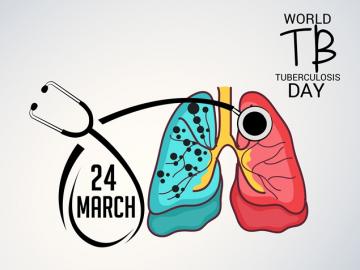 Spread Information on TB & Help in Eliminating the Disease Spread Information on TB & Help in Eliminating the Disease We live in a country that has the highest number of people affected by tuberculosis (TB) comprising of almost 27% of the world’s TB population. If I must remind you, TB remains as the world’s deadliest infectious killer disease taking the life of around 5,000 people daily. Thanks to World Tuberculosis Day & other global campaigns that have contributed tremendously and reduced mortality rates by 40%. As the Air Flows Tuberculosis is an air-borne infection that affects the lungs mainly but it can affect any other part of the body too. Spreading TB is not a hard task-you sneeze, cough or even talk and the germs are good enough to take their own course and get into another person who might breathe in these microbes. This might make the other person stay infected with TB. But there is a difference between being infected with TB and having TB disease. When a person is infected with tuberculosis, he/she has the germs inside the body but the person’s immune system protects him/her from falling sick. This is not infectious but when someone is sick with TB he/she can spread the disease to people around and this refers to the active form of TB. Yet another category is where there are few forms that don’t act upon drugs and are drug-resistant. So, when the physician prescribes drugs to treat the infection, they don’t act against the TB germs in the body. The risk of the disease depends on the action taken to treat it. Some people experience cough, chest pain and blood-filled mucous and when the necessary steps are not taken, they progress into fatal side effects. Though people assume that the intensity of the disease has not worsened or in fact, lessened they are wrong as still almost a quarter of the world’s population is infected with tuberculosis. Common symptoms of TB include:
World Tuberculosis Day World Tuberculosis Day is celebrated on March 24th each year to make the public realize about the debilitating consequences of the disease. Though globally almost 54 million lives of those affected by TB have been saved since 2000 we are a long way towards eliminating this disease. So, how are we going to achieve the global goal of making this world TB-free by 2030? The theme for 2019, ‘It’s time’ has been perfectly chosen as it comes at the right juncture. Simple, straightforward and to the point, the theme conveys multiple messages. Its time to eradicate TB, it’s time to realize whether you have TB or not, its time to stop the death toll due to TB and so on. Missing out on an aim is sad enough but not as worse as the aim getting backfired! Hope is the basis for life. We surpass every tumble, every downfall and negativity with the only hope that there would be a better tomorrow and that something better awaits us. Taking up a new job seeking a better future, moving to a new house for better life or moving to another school for better education has become a norm in life. While all these things help in making our life better what helps us to make our health better? Its better food, better exercises, better mood and better weight ranges. Weight loss is often sought-after by those whose weight ranges are above normal BMI levels. This reduction offsets health risks, improves well-being, makes the individual more active, lowers cholesterol levels and takes off the stress placed on bones. Beyond lowering your weight and these risks dieting/losing weight has the potential to take away your bone strength too!
Weight Loss Beyond Middle Age A new study states that losing weight in middle age goes beyond losing the extra fat, more into losing bone density especially for women. The loss in bone strength happens irrespective of the amount of calcium in the diet when middle-aged women lost even 5% of their body weight over a span of two years. Osteoporosis and bone incompetency have often been a problem reported by women in their 50s and 60s. While weight loss can be an advantage to mitigate cardiovascular diseases extreme weight loss has been a constant factor in triggering fracture due to osteoporosis. Its been claimed that almost 40% women and 20% men are liable to developing osteoporotic fracture above the age of 50. Also, a BMI below 21 has always been a risk factor for developing bone fractures. But such risks of fractures due to weight changes are influenced by hormones. Maybe that’s why women are at an increased risk of osteoporosis. The same risk follows them through menopause too where taking calcium supplements becomes inevitable to avoid grave bone-related problems. The research that probed into the effect of weight loss above the age of 40 in men and women showed that any individual with either short-term weight loss plan (4-6 years) or long-term weight loss (over 40 years) displayed deterioration of bones compared to those who did not lose weight. The deterioration was pronounced at the weight-bearing regions of the skeleton. Weight loss of more than 5% over 40 years increased the risk of fracture by three-folds. Retaining the Bone, Measuring Up to the Skeleton Just because studies indicate a decrease in bone strength due to weight loss after the age of 50, we simply cannot terminate our efforts while we are still overweight/obese. Staying on an unhealthy weight can lead to even more serious problems. The best solution to avoid such a problem would have been to maintain a healthy weight since childhood. We don’t have a rewind button to correct things and the smartest solution now would be to negate such damaging consequences by doing weight-bearing exercises and eating a healthy diet. Maybe what you need is a proper diet plan customized to suit your requirements and www.firsteatright.com is the best place for you to seek guidance on this matter as reputed dietitians/nutritionists are always available to fulfill your weight-related needs. Consume a well-balanced meal that contains ample calcium for bone strength. Exercise regularly and be active. Since we are now aware that weight loss can happen at any age and bone loss is also not preventable in older people maybe its time to look into therapies and interventions for avoiding bone deficits. World Water Day (March 22nd)  Think before you Hit the Shower Think before you Hit the Shower How many of you remember the plight of Cape Town last year when the city literally ran out of water & feared the arrival of the ‘Day Zero’ when there would be no water left. That’s our plight everywhere in the world today which is ironic yet true. Almost 70% of the world is covered with water but only 3% of it is freshwater. And we, have been overutilizing the world’s most undervalued natural resource-water. Water might be the essence of life but there is more to it than quenching thirst or safeguarding our health. It is critical for overall human development including economic and social development as well. Despite this billions of people live without water for their households, schools, workplaces and even farming. It was in 2010 that the United Nations recognized the right to safe & clean drinking water as a human right that’s the necessity of life. This right entitles each and everyone to safe, clean, easily accessible and affordable water for drinking, sanitation, washing clothes, cooking and personal hygiene. The growing climate change, environmental degradation and population rise impact water availability which in turn impacts quality of life. There are more than 700 children under the age of five dying everyday due to poor sanitation. Also, it’s the women and girls in the family responsible for collecting water in 80% of the households. Worse, more than 800 women die every day due to pregnancy- and childbirth-related complications. Don’t you think these are more than enough reasons to safeguard every precious drop of this priceless liquid and celebrate a day every year to educate and spread awareness? Water, Water Everywhere but not a Drop to Drink Water is the second-important element needed for survival after oxygen. We drink water when we feel thirsty, sometimes soon after getting up in the morning and rarely when we feel guilty for not drinking enough of it. Often, we are victims of headaches, tiredness, poor concentration, slower reactions, lack of strength and mood swings. We have reasons for each of these but do you know that lack of enough water consumption can lead to all of these health problems? Just like Mother Nature even 70% of our human body consists of water and this liquid is needed for helping us with the smooth functioning of vital body organs such as the brain, heart and kidneys every day, every single second that we breathe. Beyond helping in enriching functioning of parts we need water to flush out toxins from the body, stay away from kidney stones and UTI problems. Dehydration is a problem that occurs when we don’t consume enough water to compensate for the water lost from the body. This makes us come up with the most important question, “How much water does each of us need every day?” for which the answer is generally 6-8 glasses. But there is more to these as various factors too play a role in deciding upon the right quantity for every human. Some of the important factors include the place of stay, nature of work, body type and health. Know how much is right for your body by getting a detailed insight at www.firsteatright.com. Water is the blessing to us but we have lost the original charm of it by contaminating this colorless liquid with chlorine, lead, chemicals and bacteria. There is a high probability that even bottled water is at a high risk of contamination. It’s the duty of each of us to protect water from vanishing from Earth and if not, human extinction is unavoidable. World Water Day World Water Day is celebrated every year on March 22nd to spread the message about water’s importance in our lives. The theme for 2019 is “Leaving no one behind” which means finding a way to make water easily available to the billions of people living without safe water, pursuing every way possible to increase the availability of water and educate people about its importance. There are events organized, campaigns arranged, activities conducted and ideologies shared on making the best use of water and saving it for our future. We might have come up with rain water harvesting and other such methods for safeguarding this natural resource but we still let water flow from our taps continuously while brushing our teeth or washing vessels. Don’t you think bathing under a shower is a luxury when there are people who don’t get to drink a drop of it in some places? Cut down on thinking about yourself and start thinking about others. You will find ‘n’ many ways to save the world from running out of the elixir of life. World Down Syndrome Day (March 21st) 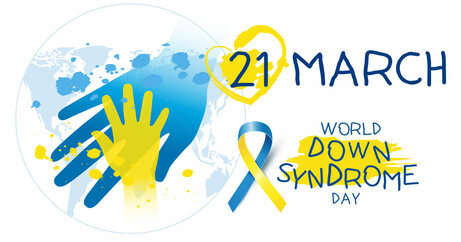 Spread Awareness, Create Oneness Spread Awareness, Create Oneness Having an extra pair of shoes, socks or clothes is great. It delivers the clear message that you are a cautious person who has a backup plan when things fail. But when our body does the same to us it puts us in jeopardy. Being extra cautious too is troublesome at times when all that we need is the right mix of elements. For instance, an extra finger or toe erupting out of our hands and legs might seem trivial but at times their placement and bone structure can pave way for serious consequences. Think about our fate when our genetic carriers-chromosomes are duplicated? These carriers of genes are the building blocks of our traits, characteristics and attributes right from eye color to height. But, having a partial or full extra copy of a chromosome is what Down’s syndrome is all about. Down’s Syndrome Human body is made of millions of cells and each of them have a nucleus inside which genetic materials are stored in the form of genes. Genes are responsible for our traits. They are present in chromosomes-a DNA molecule that contain part or all of the genetic material of an organism. Every cell contains 23 pairs of chromosomes. Half of them are inherited from each parent. Down syndrome is the result of a replication of a full or partial copy of chromosome 21. Basically, Down syndrome is the result of the presence of a third copy of chromosome-21. In general, people have 46 chromosomes in all of their cells but in people with Down syndrome there are 47 chromosomes owing to which there is a startling difference in the way they look, behave and think. While we know how it happens, we have no idea on why it happens. This condition occurs at conception and mind you, it’s the fault of no one. It’s got no cure, nor does it disappear or diminish in intensity as the child grows. Despite such consequences there is a chance that one of every 700-900 babies born will be affected by Down syndrome. Nowadays, physicians go for a test to detect Down syndrome in the fetus even before the baby is born during the first trimester of pregnancy (between 9 and 12 weeks). The condition is genetic but only 1% of cases of Down syndrome has a hereditary component. Genetic diseases have no cure but only certain means to control their intensity. Get an insight into the popular genetic diseases and their effect on humans by visiting www.firsteatright.com. Intellectual disability is the major problem of Down syndrome and every person with this condition suffers from it to a certain extent. But realize that individuals with Down syndrome are not abnormal and they are not fundamentally different from the rest of us. Its only that they need to try harder, strive more and need certain levels of support to accomplish things in life that most of us assume to come with the package called ‘life’. While earlier, individuals with the condition felt isolated, sent to different schools and segregated from the community the younger people growing up with Down syndrome are able to lead as much normal a life as possible. Interesting yet Intriguing There has been no insight into the causes behind this condition but maternal age has been associated with an increased chance of having a baby with Down syndrome. With this on one side, we have got statistics that 80% babies with Down syndrome are born to women under the age of 35 due to higher birth rates in younger women. While a 35-year-old woman has about 1 in 350 chance of conceiving a child with Down syndrome the numbers increase to 1 in 100 by age of 40. Neither are there any facts or documents supporting the fact that Down syndrome is caused by environmental factors, parents’ health or other such reasons. The extra chromosome might be from the mom or the dad. In the year 2000 a team of scientists were able to identify and catalogue each of the 329 genes on chromosome 21. This discovery has led mankind into greater advances in Down syndrome research. World Down Syndrome Day World Down Syndrome Day is celebrated on March 21st every year since 2012 as declared by the United Nations. If you are relating the day to chromosome 21 then you have found the link and congrats to your quick logical thinking. Indeed, March 21st was chosen as it is the 21st day of the 3rd month signifying triplication of the 21st chromosome which is the actual reason for Down syndrome. People with Down syndrome across the world participate in events and activities to spread awareness about the condition, improve their well-being and make the society realize that they are also normal people with normal interests in life. This year’s theme ‘Leave no one behind’ suits the requirement and ideologies of the World Down Syndrome Day just right. Join together in spreading awareness and bring light onto their lives. 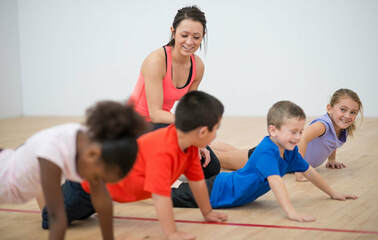 Exercising with Friends is Fun Exercising with Friends is Fun Its time to congratulate ourselves as we have nurtured a generation of kids who are moving steadily towards childhood obesity with our ‘clean plate club’ efforts, food rewards, access to smartphones and electronic gadgets in order to finish our pending chores and restricted exposure to outdoor games as both parents are working and children are enrolled in a daycare center/left at the mercy of a caretaker at home. Growing up in such an environment, the child automatically chooses junk food as a bribe for staying at home with a nanny, a treat to the kid’s favorite movie with a big tub of cheesy popcorn and become used to getting things done from sitting at their place as most of them have a dedicated maid at home to take care of the child’s needs. While this may be the scenario in upper middle class and high-class societies, children in other sectors too don’t lag far off in child obesity rates. That’s primarily because many of the baked goods, processed foods and fried items are available at a decreased cost comparatively and hence, this case is highly prevalent in all of the low-economic countries. To add to it all, most schools don’t have a dedicated time for physical activity nor do they encourage children to take part in sports activities. Even if some schools do have a play period, it is mostly utilized by other subject teachers for completing their portions before examinations. Sadly, overall body health is good physical as well as mental health of the child. Free play and activity-based play trigger a child’s mental well-being which in turn helps the kid perform well in academics too. If you are still doubtful about the underlying connection between exercise and academic performance, you can know the complete details on this with authentic evidence listed at www.firsteatright.com. Obesity: A Name of Familiarity Worldwide, nearly 1 in every 6 children are obese. Number of overweight/obese children aged between 0 and 5 years increased from 32 million in 1996 to 41 million in 2016. Kids spend less than 40% of time engaged in outdoor activities. Hopscotch, hide and seek or running have become games of the past. Had they played outdoors and been active, the world would have not reached a point where we need to force children to perform similar exercises as adults. A new research too proposes the fact that encouraging young people to do strength-based exercises such as squats, lunges and push ups can play a great role in tackling child obesity. Researchers analyzed numerous studies that probed on the effects of resistance training on body weight for children aged nine to 18 years. They studied results from 18 studies across eight countries and found that resistance training lowered body fat but did not alter lean muscle mass, body mass index and waist circumference. The research team found that participating in exercises that caused the muscles to contract, strengthen them and improve bone strength were the same ones that reduced children’s body fat percentage. The analyses also paved way for another important discovery that strength-based exercises increase muscle mass which in turn boost children’s metabolism and energy levels. While there was no direct research done and it was an analysis of other results, the results offer meaningful evidences to research further on the advantages of using resistance training to treat and prevent childhood obesity in children. Encouraging Fitness from Birth “As you sow, so shall you reap” is best-suited for kids. When parents encourage children to be physically fit and eat healthy since birth how can they grow up as a couch potato? But, the one main condition here is to include physical activity and games as a daily schedule for the entire family. Children copy their parents and when mom and dad reinforce positive ideologies and participate whole-heartedly in doing exercise together or playing games they build stronger bonds with their kids and improve physical fitness. Parents should always remember to focus on the child’s health but not his/her weight. Parents must help their kids make the right food choices and stay active. Advertisements are a child’s biggest attraction and parents must ensure that the kids are not carried away by the advertising gimmicks using phrases that are understandable to the kid and subtly prevent him/her from falling a prey to it. Every kid needs at least 60 minutes of physical activity daily. Encourage children to play with their friends, during weekends it can be family time where the whole family plays football together or the child can also be enrolled in swimming/skating classes if he/she loves it. Also, kids need ample sleep otherwise this can be a great trigger for obesity or overweight. Obesity is a growing concern worldwide that doesn’t resolve on its own without adequate attention and support. Strength-based exercises can help kids and parents make healthy choices and stay physically fit in life. We turn a year older every birthday and so do our organs, systems and body parts. Spinal cord might bend making us crouch and our muscles and bones become brittle and weaker. Leg muscles too become smaller and weaker becoming less and less able to bear our weight often resulting in disabilities and falls. While we blame old age for this none until now was aware of the science behind this or whether this can be reversed too. Now, researchers at the Manchester Metropolitan University comment that muscle wasting occurs as a result of changes in the nervous system. These changes occur because around 30-50% of nerves controlling leg movement of individuals doesn’t exist after the age of 75. Due to this, parts of many muscles stay disconnected from the nervous system which makes them functionally useless and hence these succumb to muscle wasting. Healthy muscles come to rescue here as surviving nerves can send new branches to rescue detached muscle fiber. This too is possible only when the ageing adult has healthy muscles. But when there are no internally healthy muscles and nerves that can send new branches it can result in extensive muscle loss. This condition has a medical name called Sarcopenia and it affects almost 10-20% people over the age of 65.
Muscle Fragility The Manchester study included 168 participants whose muscle tissue was studied in detail using magnetic resonance imaging (MRI). Young adults have between 60,000 and 70,000 nerves that control movement in legs from the lumbar spine. But the percentage of these nerves reduced drastically in older adults by as much as 30-60%. The nervous system must give instructions to the muscles to contract and only when this signal is sent, we can move around. In older adults the muscles are very old with only a few dozen nerves left but the young and healthy adults are blessed with hundreds of them. Researchers are now excited about the opportunity to know whether regular exercise in middle and old age slows the disconnection process of muscles from the nervous system or helps to improve the nerve branching to rescue detached muscle fiber. We need to probe further to understand whether strength training or endurance exercises would be the best fit for muscle fibers. Loss of muscle mass leads to a condition called Sarcopenia and people affected by this condition are at a higher risk of social isolation, falling, bone fracture, disability and hospital admission. Another study shows that older people who cycled regularly were able to preserve their muscle strength and mass. All these findings nullify the fact that ageing automatically makes us more fragile and there is no solution to it. Following the tips given here can help you preserve muscle health:
We are almost into the fourth month of the year and our resolutions/goals too have started fading into oblivion. Our fitness goals and healthy eating ideas take a backseat with the twist and turn of events at office parties, celebrations at home and hang outs with friends. This brings in frustration, irritation and a sense of restlessness as we remain incapable of executing our plans and goals as expected. Truly, this is not something new but is something that’s been repeated every year after the New Year.
It’s a common attitude among people to care more about weight loss numbers and reps rather than focusing on their health as projected to the outside world. Their focus is more on the end result without giving much value to the process that goes into it. It’s essential to understand that there do exist practical and sustainable ways of growing fit and healthy without succumbing to failures in life. For this, we must remember to adopt fitness and health as a way of life rather than a short-term program focusing on the process that goes in between instead of the result. A Step-by-Step Guide to Wellness Rather than completely revamping your health routine overnight start working on your transformations one by one. Try to focus on each of the domains below, be patient and focus on the goals, and you are sure to recognize that you can do it. Each one might have a definite behavior that helps in improving life but given here are ‘the-most’ important ones that is sure to help any of you to have an excellent outcome: Exercise Regularly: Perform cardio on at least five days a week for 30-60 minutes. Couple it with strength training exercises focusing on all major muscles on 2-3 days every week ensuring to never perform on consecutive days. Flexibility exercises can be performed on all days of the week benefitting all major joints. Eat Healthy Food: Choose a well-balanced meal that includes mostly plant-based foods. Ensure to eat 4-5 servings of fruits and veggies daily, go for whole grains, avoid process foods, limit dairy, sugar, salt and fat intake, and above all, control portion sizes. Before implementing all this ensure that you don’t skip meals on any given day. Take the help of nutritionists/dietitians at www.firsteatright.com to plan your meals as per your body requirements keeping portion sizes and your ultimate goal in mind. Keep moving: The suggestion is to sit for lesser than three hours a day but how feasible is it with the current working styles? Absolutely not! At least try to cover 10,000 steps in a day by keeping your environment activity-friendly and encouraging your family and friends to move with you as well. Be in Touch with Others: Be in touch with nature by spending time outdoors with others. Meet people outside social media and take time to visit friends and family. Analyze yourself regularly and improve. Kick Off Stress: Stress is what we take to our mind. It is something that we ourselves bring onto our body. Deal with stress by setting priorities, planning well ahead of time, being organized, meditating, sticking within boundaries and taking responsibility/control. Take Enough Rest: Rest is as important as activity. Ensure to sleep well for 7-8 hours daily devoid of smartphones and other electronic gadgets, take a small break during the course of the day every now and then, go on vacations regularly to relax your mind and body and fix up any day of the week to take rest completely.  Berries are Indispensable in a Nordic Diet Berries are Indispensable in a Nordic Diet Anyone passionate about health and fitness would have not missed out on the Mediterranean diet for it offers a bouquet of health-related benefits. Acclaimed to promote heart health this diet remains on top of the list of healthy diet plans but isn’t it common that people start losing interest in something that’s been around for a while? The Nordic diet comes as the perfect complementary meanwhile. Choosing a Well-travelled Path Dieting has become a normal terminology in most people’s life where the person stays on a diet for very different reasons. While most people have the feel that any diet restricts the consumption of foods, is quite imbalanced and pushes the individual to starve there are certain diets such as the DASH diet that’s been suggested by reputed organizations and health centers as it meets all the required health criteria. The Nordic diet too is quite similar to the Mediterranean diet as both these diets include plenty of plant-based foods such as fruits, veggies, whole grains and freshwater fish and limit the consumption of salt, sugar, red meat, dairy and processed foods. Its been rightly named as the Nordic diet owing to the inclusion of foods that are generally eaten in Denmark, Finland, Iceland, Norway and Sweden. A staple inclusion in any Nordic diet includes berries, root veggies such as carrots and potatoes, cereals such as oats and barley, and fatty fish such as salmon, mackerel and herring. The main difference is that while the Mediterranean diet emphasizes the use of olive oil for cooking the Nordic oil favors the use of canola (or rapeseed oil) for all purposes. Although the canola oil is also a healthy monounsaturated fat it also contains plant-based omega-3 fatty acids (alpha-linolenic acid) that’s quite similar to the ones found in fish. Consuming ample berries too is a special feature of the Nordic diet and research by Harvard scientists has shown that eating ample berries such as the raspberry and blueberry helps an individual gain less weight and lower the risk of a heart attack. This is due to the presence of a plant chemical called as anthocyanin which helps to lower blood pressure. Counting the Benefits The Mediterranean and Nordic diet rely upon local, seasonal and sustainable foods which make them even more desirable. Sustainable in the sense these diets reduce the amount of meat consumption which reduces carbon gas emission into the atmosphere and advantageous to health owing to the inclusion of plenty of fruits, veggies and whole grains. While the Nordic diet has been around for a while the new Nordic diet that’s been developed quite recently recommends the consumption of organic produce and homemade foods while decreasing the use of food additives. The new diet focuses more on giving flavour to the foods and increasing their nutritional value. The WHO credits both the Mediterranean and the Nordic diets on their benefits in reducing the risk of cancer, type 2 diabetes and heart disease. Studies do show the Nordic diet to be helpful in reducing inflammation of fatty tissues, lowering blood pressure levels, maintaining cholesterol levels and also losing weight. We’ve also seen acclaims for this diet in enabling the chances of pregnancy as this diet is low in processed foods and fats and high in plant-based foods such as fruits and veggies. The Final Word Though the Nordic diet isn’t as successful/efficient as the Mediterranean diet in treating heart disease it’s definitely way above the rest of the diet plans and seems to fit the bill perfectly. Also, the diet relies on eating seasonal produce which makes it friendly on our pocket and fresh too. For all those looking for a good diet plan that would help the body get healthier and fitter the Nordic diet is the right one for you. Get in touch with reputed dietitian nutritionists at www.firsteatright.com to customize the diet suiting your requirements and reap benefits. How many of you are your natural self in front of other people? Not many! Though this world demands a few societal policies that need to be implemented there is no requirement for you to be under false pretext every second in life. What might seem to be good to one might be bad to another. Its impossible to please everyone in this world including yourself and when you enter this web, it’s never-ending and ever-tiring. Being amongst people who keep judging you constantly, scoring you for your work and commenting on each and everything that you do isn’t cool, normal or acceptable. For example, during a public-speaking event the speaker is constantly judged on what he/she speaks and even abrasive comments are heard sometimes. The same hold good for any ‘laugh for a cause’ events, plays or even for those who conduct classes. Under such circumstances, we become more conscious about what happens around us losing track of our motive and treading off the path. But this wasn’t our ideology in the first place, right?
Smile to Succeed Amidst any situation where people judge us our bodies produce steroid hormones called glucocorticoids that have a strong impact on various systems in the body. This hormone is mainly the effect of the hypothalamus-pituitary-adrenal (HPA) axis which includes the hypothalamus and pituitary gland in the brain and the adrenal glands near the kidneys each of which contribute to such changes in the body. One group of researchers were interested in knowing whether the HPA axis played a crucial role in affecting nonverbal feedbacks too, for instance, facial expressions. From past research we know that there are at least three different genuine smiles exhibited by people: Reward smile: Display happiness and reinforce behavior Affiliation smile: Intensify social bonds between people Dominance smile: Display cheekiness and establish superior social status The group’s major aim was to understand how each of these smiles affected HPA axis. For this, they chose 90 male college goers who were asked to give three short speeches about themselves in front of a male evaluator who was present only over the web camera. During each of the speeches the evaluator went live only for a second after which he turned off the camera. After each of the speeches the participants were show videos of the evaluator’s face expressions. Though the participants were told that the expressions were spontaneous what these poor kids did not know was the fact that in fact they were pre-recorded emotions. There was a sign of reward, affiliation or dominance smile in each of the videos after the speech and every time the participants were also shown a video that contained a neutral face expression. The researchers measured levels of glucocorticoid level in the men’s saliva and also used an electrocardiograph before, during and after the speech to measure heart activity. Results showed that:
Though this study provides a small insight into the impact of nonverbal cues on people we need more studies and also those on women as they may respond in a different manner compared to men! Anything processed lacks nutrients, wellness and health-this is the idea that most people have in their minds when it comes to processed foods. These foods are not blamed for one or two but many more side effects beyond obesity and cholesterol. The healthy folks hate it and the foodie loves it. These foods have earned a bad name and have established themselves as a bad omen in a healthy diet meal. Agreed, few foods exactly below to this category but there is more to processed foods than French fries, potato chips, hamburgers and ready-to-eat pizzas. How many of you know that homemade soup or whole-wheat bread is also a processed food that’s been worshipped by health folks worldwide? While most processed foods must stay far away from our daily diet there are some of them that can exist along with other foods in our diet. Its necessary to differentiate the suitable from the unsuitable ones.
Processed Food Any food that undergoes processing in the form of cooking, canning, freezing, baking, fortifying, preserving or preparing must be called a processed food. The level of processing decides upon the health status of the food. It can be minimally processed such as cut vegetables or roasted nuts, processed maximum in order to retain nutrient values which includes canned tomatoes and frozen fruits, some foods that have extra ingredients added to improve taste, flavor and spiciness, ready-to-eat foods such as granolas that are comparatively more processed and pre-cooked meals such as frozen pizzas and microwaveable dinner that are maximum processed. There is a detailed list of the different foods that belong to different levels of processing along with their effects on the body elaborated at www.firsteatright.com. Catch Hold of the Cations of Processed Foods Milk and juices fortified with calcium and vitamin D are also processed foods and we look forward to including these staples in our diet for improved nutrition. Realizing that some processed foods add more value to your meal and making space to accommodate them helps you retain health, add more wellness and improve strength. Your breakfast cereals have the potential to add more fiber, canned fruits replace the absence of certain seasonal fruits and even pre-cut veggies are a great option for people in this busy world. The very basis of avoiding the inclusion of more processed foods in your meal plan is to cook your meals at home, mostly from scratch and include whole foods such as fresh fruits, veggies, whole grains and fiber. Avoid the Anions of Processed Foods While some of the foods (such as the ones mentioned above) are good on the body there are some others that might contain more of added sugars, salt and cholesterol making the whole point of eating go in vain except for the taste of the food (and this cannot be valued every time we eat something). Fruits contain natural sugars and these are essential for the body for providing it with energy. But most processed foods contain added sugars that aren’t present only in the sweets prepared but almost in every food right from your breads, pasta sauces and cereal to low-fat foods to improve their taste. It is advisable to go through a product’s ingredient list and look for added sugars mentioned under any form (as corn syrup, maple syrup, brown sugar, honey, fruit juice extract etc.) among the first two or three ingredients. Salt is another major enemy that shows its solid presence in processed foods as this is required to increase shelf-life of these foods. Many of the canned veggies, soups and sauces have abundant salt in them. Hence, it is necessary to look for foods which state no salt added, low-sodium or reduced-sodium to avoid as much salt as possible from processed foods. Ideally, ensure that the food you eat is high in nutrients and low in sugars, salt and fats which once again makes you revisit the concept of a well-balanced meal.  It’s not a Sin to Eat a Cookie Rarely It’s not a Sin to Eat a Cookie Rarely Hunger necessitates the need to eat food but of late people eat for plenty other reasons apart from hunger such as boredom, frustration or stress. Fitness experts recommend that each of us wait for a whole 10 minutes before succumbing to food. This time is good enough for us to analyze and decide whether we are truly feeling hungry or not. If you do feel hungry and this happens quite often there is nothing to panic. What you eat, when you eat and how you eat are great deciding factors on your health. It is possible to avoid starvation, refrain from eating morsels for meals but still lose weight by ensuing certain principles: Adopt to a regular eating schedule: What you eat and how you eat matters, but these are only 50% of your ultimate plan. ‘When’ you eat too matters greatly. If you allow hunger to reach its peak you are sure to gobble upon food and eat more than your regular portions. Eating meals at stipulated times and also having a light snack in between can save you from hunger which in turn can save you from cravings. Eat an early lunch: Even a study published in a journal shows that eating an early lunch can promote weight loss. The study participants lost 25% more weight than those who ate after 3 p.m. despite eating the same portions and the same foods. Eating late might create a craving for some junk which might lead to snacking on processed foods during late-evening snack break. Focus on what you eat: Ditch the smartphone, switch off the television and concentrate on what goes into your mouth. Be conscious of the food placed in front of you and focus on eating it. There are results supporting the fact that distracted eating can add up to the chances of weight gain. Include vegetables for every meal: The fiber content of vegetables helps you feel full for a longer period without adding much calories. Also, start eating your meal with vegetables. By prioritizing their intake first, you are not paving way for additional portions of food on the plate. Rich in nutrients, vegetables are the right choice to start eating any meal. Use smaller cutlery: When the plates and bowls are smaller you tend to serve smaller portions of food. We have got the tendency to fill our plates with food irrespective of the size of the plate. Hence, smaller the plate better is it for you to stick to portion sizes. Also, keep desserts or fries at the far end corner of the dining area to avoid repetitive serving and overeating. Keep Unhealthy food out of sight and bring in healthier ones: It is human tendency to pick something that lies right in front of our eyes and eat it. Applying the same concept, store away unhealthy foods or throw them out. Fill your tables with a bowl of fresh fruits and your kitchen cabinets with colorful veggies. Maintain a food journal: Writing down what you eat helps to reach your weight loss goals faster. That’s because the individual becomes more aware of what he/she eats and takes concrete steps to improve his/her eating habits and control portion sizes. Ensure to include all food groups: Never stray away from a particular food group such as fats or carbs. By doing this, you are overloading your tummy with too much of another food group and creating an imbalance finally. Ensure to eat plenty of fruits, veggies, whole grains with a portion of carbs, lean meat and low-fat dairy. Try to cook most of your meals at home: When you cook it keeps you in control of the ingredients and their quantity. Those who eat at home are likelier to hold excess body fat compared to those who ate less of home-cooked food. Avoid Soda & Cream: A glass of soda can be gulped in less than a minute but there is a possibility that you have consumed more calories than imagined. In coffee too, avoid whipped cream as it can amplify calorie value multifold times. Enjoy a cheat food: Depriving yourself of every food you enjoy is going to take you nowhere and all that remains finally might only be frustration. Enjoy a portion of your favorite cookie or dessert once a week. Try eating it for lunch and avoid them completely during dinner. This way you remind yourself that you are sticking to a well-balanced diet plan that doesn’t curb you from everything you want. If you are looking out for a well-balanced diet plan to lose weight or become fit, get in touch with reputed dietitian nutritionists at www.firsteatright.com. Pair it up with the right exercises and physical activity to enjoy a smooth weight loss journey. |
AVOID FRAUD. EAT SMART.+91 7846 800 800
AuthorDietitian & Nutritionist Dr. Nafeesa Imteyaz. Archives
July 2024
Categories
All
Dr. Nafeesa's Blog @blogspot |
- Home
- Written Testimonials
- Consult
- Clinics
- Blogs
-
Diet & Nutrition
- Diabetes Reversal
- IVF IUI not needed for PCOS PCOD Infertility
-
Medical Nutrition
>
-
Disease & Conditions
>
- Infertility | PCOS
- Diabetes Mellitus
- Cholesterol
- Hypothyroid
- Kidney Problems
- Hypertension
- Cardiovascular Diseases
- Liver Diseases
- Gastro intestinal disorder
- Cancer
- Metabolic Disorders
- Orthopedic Disorders
- Eating Disorders
- Dietary Recall
- Weight Record Filled By Clients
- Online Payment Transaction Details
- Online Clients Weight Check Form
- Our Program Package Service Charges
- Weight Record 2017 Clients
- Measurements sent by Clients
- Terms & Conditions Of Payment
- Thanks. Your Form is Submitted
- Video Testimonials
- Lifestyle & Wellness
- Lifestyle & Wellness Blog
- Allergy & Intolerance
- Weight Loss / Gain
- Weight Loss / Slimming Blog
-
Disease & Conditions
>
- Life Cycle Nutrition >
- Sports Nutrition >
- Integrity in Nutrition
- Knowledge Centre
© COPYRIGHT 2022. ALL RIGHTS RESERVED. FRST HEALTHCARE PVT LTD.
Dr. Nafeesa Imteyaz of First Eat Right clinic, is the Best Dietitian Nutritionist in Bangalore. Best Dietitian Nutritionist in Pune. Best Dietitian Nutritionist in Hyderabad. Best Dietitian Nutritionist in Chennai. Best Dietitian Nutritionist in Mumbai. Best Dietitian Nutritionist in Delhi. Best Dietitian Nutritionist in Kolkata.




